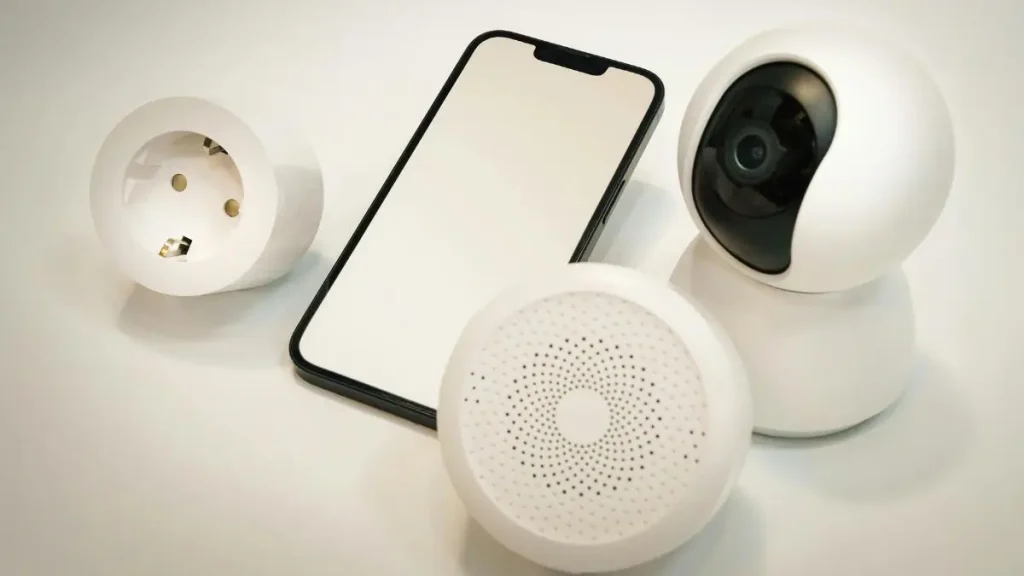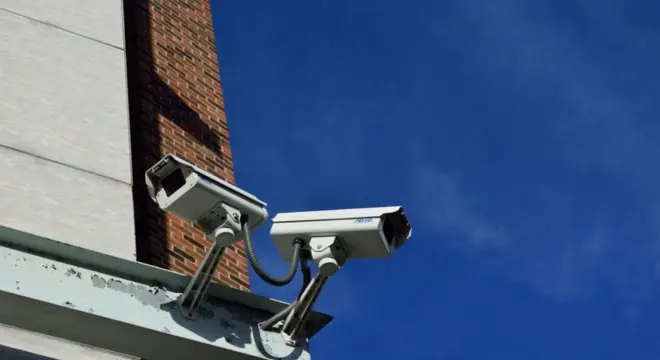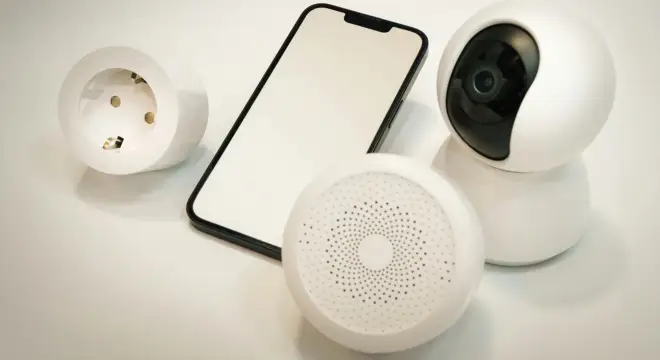7 Home Security Myths That Could Put Your Family in Danger
I used to think my home was completely safe—until I realized how many myths I’d been believing without question. You might think the same: maybe you rely on a dog, a simple lock, or the idea that “burglars only strike at night.” The truth? These assumptions can leave your home far more vulnerable than you imagine.
Most people don’t realize it, but according to the FBI, roughly 60% of burglaries happen at residential properties—and many occur during the day when you’re away at work. That means relying on half-truths or outdated beliefs isn’t just risky—it’s inviting trouble.
In this article, I’ll walk you through the seven most common home security myths, explain why they’re misleading, and show you practical ways to actually protect your home. By the end, you won’t just “feel safer”—you’ll know exactly what steps matter and what’s simply a myth that could lull you into a false sense of security.
Myth 1: “Home Security Systems Are Too Expensive”

I used to hesitate installing a home security system because I assumed it would cost a fortune. Maybe you’ve thought the same. But here’s the truth: modern systems have become surprisingly affordable, especially the DIY options. You can get a decent setup starting around $100, and monthly monitoring can be as low as $15.
I like to remind people that the investment pays off in peace of mind. Think of it this way: spending a few hundred dollars could prevent thousands in potential losses—and give you something priceless: security.
According to CNET, many homeowners avoid security systems because they overestimate the cost and complexity. But simple, budget-friendly solutions exist that can be set up in a weekend
So if cost has been holding you back, it’s time to rethink your approach. You don’t need a multi-thousand-dollar system to make your home significantly safer.
If you want to see some simple ways to protect your home without breaking the bank, check out 8 Simple Ways to Stop Worrying About Home Burglaries Today.
Myth 2: “My Dog Is Enough Protection”
I see this one all the time: someone tells me, “My dog will keep intruders away.” Sure, a dog can alert you, but it’s not a replacement for real security measures. Burglars often plan for pets, and a dog won’t stop a determined intruder armed with tools or weapons.
Here’s what works better: combine your furry friend with smart locks, cameras, and motion-activated lights. This way, your dog becomes an added layer of security, not your only defense.
Myth 3: “Burglars Only Strike at Night”
You might assume criminals only come when it’s dark, but most break-ins actually happen during the day. According to several crime studies, over 60% of residential burglaries occur between 6 a.m. and 6 p.m.—exactly when many of us are at work.
I recommend thinking of home security like insurance: it’s not about when you expect a problem, it’s about being prepared at all times. Keep doors locked, use timers for lights, and make your home appear occupied even during daylight hours.
Myth 4: “Home Security Systems Are Complicated to Install”

I’ve spoken with plenty of friends who avoided security systems because they thought installation would be a headache. In reality, most modern systems are designed for DIY installation. Wireless cameras, smart doorbells, and motion sensors come with step-by-step guides that even a novice can follow.
I suggest starting small—install one or two key devices first. Once you see how simple it is, adding the rest becomes a breeze. This approach also helps you understand your system better, so you’re not relying blindly on technology.
Myth 5: “Wireless Systems Are Easily Hacked”
I know the fear: “If it’s wireless, someone can hack it, right?” It’s a common concern, but most reputable wireless security systems use strong encryption and tamper detection. Modern systems are built to alert you instantly if anything suspicious occurs.
Think of it like online banking: it’s safe when you use the right provider and follow basic precautions. Using strong passwords, updating firmware, and choosing trusted brands dramatically reduces risk—while still letting you enjoy the flexibility of wireless security.
If you want quick, actionable home security updates and tips, many readers find it helpful to stay in touch through instant alerts—like the ones shared on WhatsApp.
Myth 6: “Security Systems Are Easily Hacked”
I get it—you’ve heard the horror stories about hackers breaching home security systems. But here’s the reality: modern security systems are designed with robust encryption and tamper-resistant features. While no system is entirely invulnerable, reputable brands prioritize cybersecurity to protect your data and home.
To enhance your system’s security, ensure you:
- Regularly update passwords and firmware.
- Use two-factor authentication when available.
- Choose systems that offer end-to-end encryption.
By staying proactive, you can significantly reduce the risk of unauthorized access.
Myth 7: “Smart Devices Are Just a Trend”
Some dismiss smart home devices as mere gadgets, but they play a crucial role in modern home security. Devices like smart locks, doorbell cameras, and motion sensors integrate seamlessly to provide real-time alerts and remote monitoring.
Consider this: a study found that homes with visible security systems, including smart devices, are significantly less likely to be targeted by burglars.
Integrating smart devices into your security plan can offer enhanced protection and peace of mind.
Many homeowners also find these 10 Simple Ways to Outsmart Burglars and Protect Your Home incredibly practical for day-to-day security.
Real Threats You Should Actually Worry About

While myths abound, it’s essential to focus on real threats to your home security. These include:
- Package Theft: With the rise of online shopping, “porch piracy” has become more prevalent. Secure your deliveries by using smart doorbell cameras or arranging for packages to be delivered to a secure location.
- Social Media Oversharing: Posting vacation plans online can alert potential burglars to an empty home. Be mindful of what you share and adjust privacy settings accordingly.
- Unlocked Windows and Doors: Simple oversights like leaving windows or doors unlocked can provide easy access for intruders. Always double-check all entry points before leaving your home.
Addressing these genuine concerns can bolster your home’s security more effectively than debunking myths.
For a broader guide on making your home theft-proof, take a look at 18 Proven Ways to Theft-Proof Your Home.
Practical Measures That Actually Work
To enhance your home security, consider implementing these proven strategies:
- Install Motion-Sensor Lighting: Illuminating dark areas around your property can deter intruders.
- Use Smart Timers for Lights: Create the illusion of occupancy by setting indoor lights to turn on and off at random intervals.
- Secure Sliding Doors: Reinforce sliding doors with security bars or dowels to prevent easy access.
- Maintain Landscaping: Trim bushes and trees near windows to eliminate hiding spots for potential intruders.
These practical steps, combined with a comprehensive security system, can significantly reduce the risk of a break-in.
Have you ever believed any of these home security myths? Share your experience in the comments below—I’d love to hear how you protect your home.
Final Thoughts: Don’t Let Myths Compromise Your Safety
It’s easy to fall into the trap of believing common myths about home security. However, staying informed and proactive is key to protecting your home and loved ones. By debunking these myths and focusing on real, actionable security measures, you can create a safer living environment.
Remember, your home’s security is not just about installing devices—it’s about staying vigilant, informed, and prepared. If you have questions or need guidance on enhancing your home security, feel free to ask. Your safety is worth the effort.
For more tips on keeping your home safe, explore our full Home Security collection and discover practical strategies you can implement today.
Disclaimer: The information provided in this article is for general educational purposes only and is not a substitute for professional security advice. Always consult a certified security expert before making major home security decisions. The author and website are not responsible for any outcomes resulting from the implementation of these tips.


